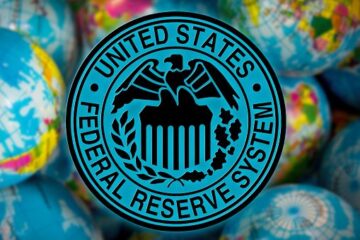The Federal Reserve began its interest-rate reduction campaign with last week’s 50-basis-point (0.5-percentage-point) move.
The median forecast of Fed officials calls for about another half-point of easing this year and another full point next year.
Falling rates have mixed implications for you. On the plus side, they mean lower payments on your mortgage, auto, credit-card and bank loans. On the minus side, they mean lower income from your savings accounts, certificates of deposit and money-market accounts.
David Solomon, CEO of Goldman Sachs, one of the country’s preeminent banks.
What’s pushing the Fed to cut rates is inflation’s decline toward the central bank’s 2% target. The Fed’s favored inflation indicator, the Personal Consumption Expenditures Price Index, rose 2.5% in the 12 months through July, down from 3.4% a year earlier.
Many experts think the Fed rate cuts will help prevent a recession. In this view, continued economic growth, combined with reduced inflation, will give the economy what’s known as a soft landing.
The economy expanded an annualized 3% in the second quarter, up from 1.4% in the first quarter. And the Atlanta Fed’s GDP forecasting model calls for 2.9% growth in the third quarter.
Goldman Sachs changes views on economy, Fed
Goldman Sachs economists last week lifted their prediction for third-quarter growth to 3% from 2.5%. The change came amid strength in retail sales, industrial production and housing starts.
The economists see monthly payroll growth rebounding to about 160,000 a month, up from the three-month average through August of 116,000.
They also elevated their outlook for further Fed rate cuts. That’s because the Fed chose a half-point cut last week rather than the quarter-point many experts expected.
Related: JP Morgan’s Jamie Dimon offers surprising view on economy
“The greater urgency suggested by the [50-basis-point] cut and the acceleration in the pace of cuts that most [Fed policymakers] projected for 2025 led us to shift our forecast,” Goldman economists said.
They shifted to a forecast of consecutive 25-basis-point cuts through June 2025, when the Federal Funds Rate would reach their terminal forecast of a range of 3.25% to 3.5%.
The Fed’s target range for the Federal Funds Rate currently stands at 4.75%-5%. The rate applies to overnight loans between banks, which they use to keep their reserve levels stable.
Goldman’s previous prediction was for consecutive rate reductions in November and December, followed by quarterly cuts next year.
As for the Fed’s next meeting in November, “We see the choice between a 25-point cut and a 50-point cut as a close call that will likely come down to the next two employment reports,” the economists said.
Bank of America: ‘Bubble risks returning’
In financial markets, stocks, short-term Treasury securities and gold have reacted positively to the Fed’s action last week.
But investors’ enthusiasm could spell danger, says Michael Hartnett, chief investment strategist at Bank of America.
Stock and credit markets are pricing in 2.5 percentage points of rate cuts and 18% growth in corporate earnings between now and the end of 2025, he wrote in a commentary.
Related: Vanguard lays out key investing strategy after Fed rate cut
“It doesn’t get much better than that for risk” investments, so investors will feel forced to “chase” the rallies, he said. This means “bubble risks are returning.”
And how should investors respond? “Use a risk rally to buy dips in bonds and gold,” he said. That’s because few investors are paying attention to the possibility of a recession and of inflation speeding up, he said.
During recessionary periods, bond prices usually rise and gold prices often rise.
Glenmede’s take on economy and stocks
Jason Pride, chief investment strategist at wealth management firm Glenmede, sees the economy “in good shape for the time being.”
While stock valuations are “extended, … it is not uncommon to see premium valuations late in [economic] cycles, a state which could persist for quite some time,” he wrote in a commentary.
More Economic Analysis:
Jobs report surprise adds to case for bigger Fed interest rate cutsJobs report to signal timing and size of autumn Fed interest rate cutsFed rate cuts may not guarantee a September stock market rally
Price recommends that investors tilt toward small-capitalization stocks, as they are more fairly valued than large-caps and can benefit more from Fed rate cuts.
They benefit because smaller companies often have more need to borrow than larger ones do. And smaller companies often have to borrow at floating rates.
Related: Veteran fund manager who correctly forecast stock drop updates outlook


